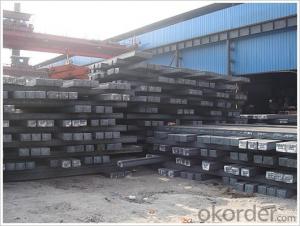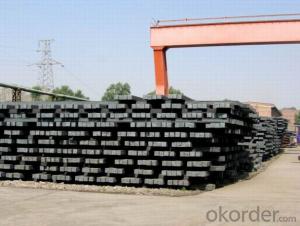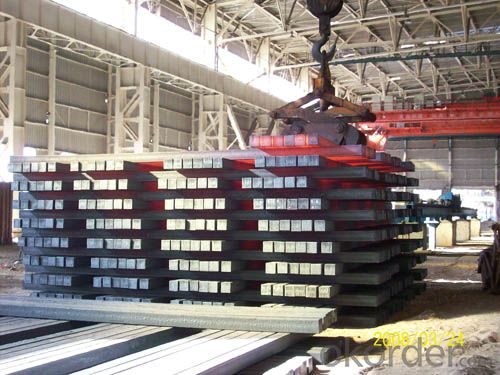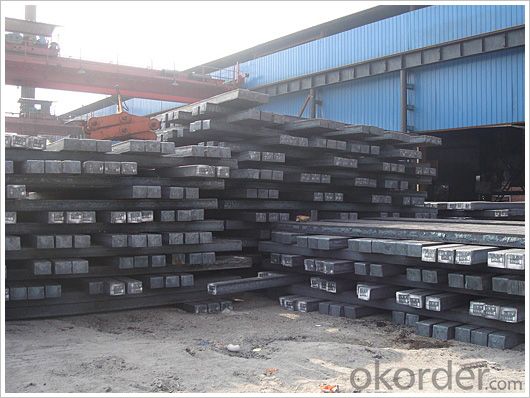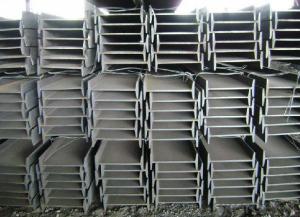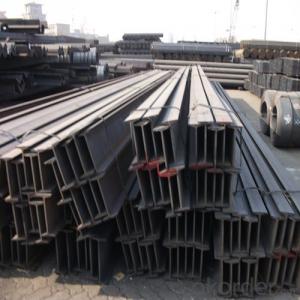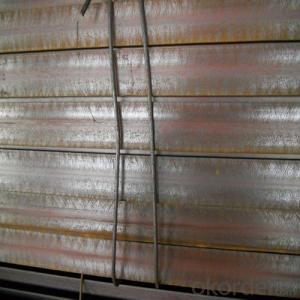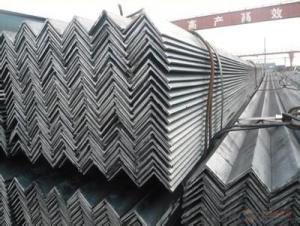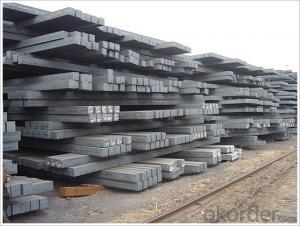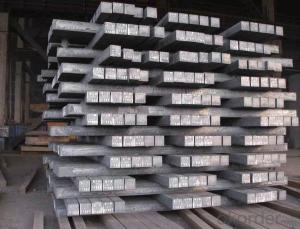Steel I Beam Hot Rolled High Quality S235JR GB Q235
- Loading Port:
- Tianjin
- Payment Terms:
- TT or LC
- Min Order Qty:
- 25 m.t.
- Supply Capability:
- 20000 m.t./month
OKorder Service Pledge
OKorder Financial Service
You Might Also Like
Product Description:
OKorder is offering high quality Hot Rolled Steel I-Beams at great prices with worldwide shipping. Our supplier is a world-class manufacturer of steel, with our products utilized the world over. OKorder annually supplies products to European, North American and Asian markets. We provide quotations within 24 hours of receiving an inquiry and guarantee competitive prices.
Product Applications:
Hot Rolled Steel I-Beams are ideal for structural applications and are widely used in the construction of buildings and bridges, and the manufacturing, petrochemical, and transportation industries.
Product Advantages:
OKorder's Steel I-Beams are durable, strong, and resist corrosion.
Main Product Features:
· Premium quality
· Prompt delivery & seaworthy packing (30 days after receiving deposit)
· Corrosion resistance
· Can be recycled and reused
· Mill test certification
· Professional Service
· Competitive pricing
Product Specifications:
Manufacture: Hot rolled
Grade: Q195 – 235
Certificates: ISO, SGS, BV, CIQ
Length: 6m – 12m, as per customer request
Packaging: Export packing, nude packing, bundled
Chinese Standard (H*W*T) | Weight (Kg/m) | 6m (pcs/ton) | Light I (H*W*T) | Weight (Kg/m) | 6m (pcs/ton) | Light II (H*W*T) | Weight (Kg/m) | 6M |
100*68*4.5 | 11.261 | 14.8 | 100*66*4.3 | 10.13 | 16.4 | 100*64*4 | 8.45 | 19.7 |
120*74*5.0 | 13.987 | 11.9 | 120*72*4.8 | 12.59 | 13.2 | 120*70*4.5 | 10.49 | 15.8 |
140*80*5.5 | 16.89 | 9.8 | 140*78*5.3 | 15.2 | 10.9 | 140*76*5 | 12.67 | 13.1 |
160*88*6 | 20.513 | 8.1 | 160*86*5.8 | 18.46 | 9 | 160*84*5.5 | 15.38 | 10.8 |
180*94*6.5 | 24.143 | 6.9 | 180*92*6.3 | 21.73 | 7.6 | 180*90*6 | 18.11 | 9.2 |
200*100*7 | 27.929 | 5.9 | 200*98*6.8 | 25.14 | 6.6 | 200*96*6.5 | 20.95 | 7.9 |
220*110*7.5 | 33.07 | 5 | 220*108*7.3 | 29.76 | 5.6 | 220*106*7 | 24.8 | 6.7 |
250*116*8 | 38.105 | 4.3 | 250*114*7.8 | 34.29 | 4.8 | 250*112*7.5 | 28.58 | 5.8 |
280*122*8.5 | 43.492 | 3.8 | 280*120*8.2 | 39.14 | 4.2 | 280*120*8 | 36.97 | 4.5 |
300*126*9 | 48.084 | 3.4 | 300*124*9.2 | 43.28 | 3.8 | 300*124*8.5 | 40.87 | 4 |
320*130*9.5 | 52.717 | 3.1 | 320*127*9.2 | 48.5 | 3.4 | |||
360*136*10 | 60.037 | 2.7 | 360*132*9.5 | 55.23 | 3 |
FAQ:
Q1: How do we guarantee the quality of our products?
A1: We have established an advanced quality management system which conducts strict quality tests at every step, from raw materials to the final product. At the same time, we provide extensive follow-up service assurances as required.
Q2: How soon can we receive the product after purchase?
A2: Within three days of placing an order, we will begin production. The specific shipping date is dependent upon international and government factors, but is typically 7 to 10 workdays.
Q3: What makes stainless steel stainless?
A3: Stainless steel must contain at least 10.5 % chromium. It is this element that reacts with the oxygen in the air to form a complex chrome-oxide surface layer that is invisible but strong enough to prevent further oxygen from "staining" (rusting) the surface. Higher levels of chromium and the addition of other alloying elements such as nickel and molybdenum enhance this surface layer and improve the corrosion resistance of the stainless material.

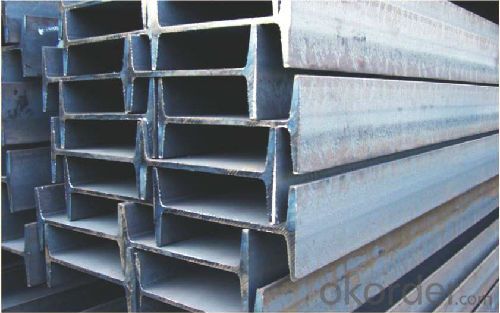
- Q: What are the common applications of steel billets?
- Steel billets are commonly used as raw material for the production of various steel products, such as bars, rods, wire, pipes, and tubes. They are also utilized in the automotive industry for manufacturing parts like crankshafts, camshafts, and gears. Additionally, steel billets find applications in construction for producing structural elements like beams, columns, and girders.
- Q: How are steel billets handled during transportation?
- Steel billets are typically handled with great care during transportation to ensure their safety and prevent any damage. They are usually transported using specialized equipment such as cranes, forklifts, or conveyors. These tools are used to lift and move the heavy billets from one location to another. Before transportation, the billets are often bundled or secured together to prevent them from shifting or falling during transit. This bundling process can involve using steel straps or bands to hold the billets tightly together, ensuring they remain stable and intact during transportation. In addition to securing the billets, protective measures are often taken to prevent any external damage. For instance, the billets may be covered with protective coatings, such as oil or rust inhibitors, to shield them from moisture or corrosion. This is particularly important when transporting billets over long distances or in adverse weather conditions. During transportation, the billets are carefully loaded onto trucks, trains, or ships, depending on the destination. Special attention is given to balancing the weight distribution to prevent any imbalance or tipping during transit. The transportation vehicles used are designed to handle heavy loads and often have mechanisms in place to secure the billets further, such as straps, latches, or containers. While in transit, the vehicles carrying the steel billets are driven or operated with caution to minimize any sudden movements or impacts. Drivers may need to follow specific routes or speed limits to ensure a smooth and safe journey. Regular inspections and maintenance of the transportation vehicles are conducted to ensure their reliability and prevent any mechanical failures that could jeopardize the safety of the billets. Overall, the transportation of steel billets involves a combination of careful planning, secure bundling, protective measures, and safe handling techniques. These practices aim to safeguard the billets and ensure they reach their destination in optimal condition, ready for further processing or use in various industries.
- Q: How are steel billets used in the production of mining conveyors?
- Steel billets are a crucial component in the production of mining conveyors. Mining conveyors are used to transport bulk materials, such as coal, ore, and gravel, over long distances. These conveyors need to be sturdy and durable to withstand the harsh conditions of a mining environment. Steel billets serve as the raw material for manufacturing conveyor rollers. Conveyor rollers are an essential part of the conveyor system as they support and guide the conveyor belt. Steel billets are first heated and then rolled into desired shapes to create the conveyor rollers. The heating process helps in improving the steel's malleability, making it easier to shape. The use of steel billets in the production of mining conveyors ensures that the rollers have high strength and resistance to wear and tear. The steel's properties, such as its toughness and hardness, make it ideal for withstanding heavy loads and abrasive materials. Furthermore, steel billets can be customized to meet specific requirements. Different mining operations may have different needs in terms of conveyor dimensions, load capacities, and environmental conditions. Steel billets allow manufacturers to produce conveyor rollers of various sizes and specifications, ensuring that they are tailored to the specific needs of each mining operation. In summary, steel billets play a vital role in the production of mining conveyors by providing the raw material for manufacturing conveyor rollers. These rollers are essential for supporting and guiding the conveyor belt, ensuring efficient and reliable transportation of bulk materials in a mining environment. The use of steel billets ensures that the conveyor rollers are strong, durable, and capable of withstanding the harsh conditions of the mining industry.
- Q: What is the average density of a steel billet?
- The density of a steel billet can differ based on its specific grade and composition. On average, a steel billet has a density ranging from approximately 7,800 to 8,050 kilograms per cubic meter (kg/m³). This density is higher than that of numerous other materials, rendering steel a dense and weighty substance. When determining the weight, volume, and overall structural properties of a steel billet, its density plays a vital role.
- Q: What are the different surface treatments for corrosion resistance in steel billets?
- There are several surface treatments available for enhancing corrosion resistance in steel billets. These treatments are crucial in preventing the formation of rust and oxidation, which can significantly deteriorate the quality and lifespan of the steel billets. Some of the commonly used surface treatments for corrosion resistance in steel billets include: 1. Hot-dip galvanizing: This process involves immersing the steel billets in a bath of molten zinc, forming a protective coating on the surface. The zinc coating acts as a sacrificial layer, shielding the steel from corrosion. 2. Electroplating: This method involves depositing a thin layer of a corrosion-resistant metal, such as nickel or chromium, onto the steel billet's surface using an electrochemical process. The plated metal acts as a barrier, preventing direct contact between the steel and corrosive agents. 3. Passivation: This treatment involves treating the steel surface with chemicals, typically an acid solution, to remove any impurities or contaminants that may promote corrosion. Passivation creates a passive oxide layer on the surface, which provides corrosion resistance. 4. Powder coating: In this process, a dry powder is applied to the steel billet's surface electrostatically and then cured under heat. The powder melts and forms a protective layer on the steel, which offers excellent corrosion resistance. 5. Organic coatings: These coatings, such as paints or varnishes, are applied to the steel billet's surface. They provide a protective barrier against moisture and corrosive agents. Organic coatings can be customized to meet specific requirements in terms of color, texture, and durability. 6. Anodizing: This treatment is typically used for aluminum or aluminum alloy steel billets. It involves creating an oxide layer on the surface by subjecting it to an electrochemical process. The resulting anodized layer enhances corrosion resistance and also provides an aesthetic appearance. It is important to choose the appropriate surface treatment based on the specific requirements of the steel billets, considering factors such as the intended application, environmental conditions, and expected lifespan. Regular maintenance and periodic reapplication of the surface treatment may also be necessary to ensure continued corrosion resistance.
- Q: What are the different types of steel billet forming processes?
- The different types of steel billet forming processes include hot rolling, cold rolling, extrusion, forging, and casting.
- Q: How do steel billets contribute to the manufacturing of renewable energy equipment?
- The utilization of steel billets plays a crucial role in the production of renewable energy equipment. These semi-finished metal products are indispensable as raw materials in the manufacturing process of various components and structures that are essential for renewable energy systems. To begin with, steel billets find extensive use in the fabrication of wind turbines. The construction of wind turbine towers, typically composed of steel, necessitates a significant quantity of steel billets. These billets are employed in the creation of tower sections, which are subsequently assembled to form towering structures that support the wind turbines. Additionally, steel billets are also indispensable in the production of other wind turbine components, such as rotor hubs and nacelles, which house vital turbine parts like the generator. Moreover, the significance of steel billets extends to the manufacturing of solar energy equipment. Solar panels, which harness sunlight to generate electricity, depend on steel structures to provide support and stability. Steel billets are employed in the construction of frames and mounting systems that secure the solar panels in place, thereby ensuring their longevity. These steel structures facilitate the installation of solar panels on diverse surfaces including rooftops, fields, and even floating platforms. Furthermore, steel billets are essential in the production of other renewable energy equipment. For example, hydroelectric power plants necessitate steel components such as penstocks, which are large pipes responsible for transporting water to the turbines. Steel billets are also utilized in the construction of biomass power plants, where they form the structures that accommodate biomass boilers and generators. In conclusion, steel billets are of utmost importance in the manufacturing process of renewable energy equipment. They play a crucial role in creating the structures, components, and supports that are indispensable for the proper functioning of wind turbines, solar panels, hydroelectric power plants, and biomass power plants. The utilization of steel billets ensures the durability, strength, and reliability of these renewable energy systems, thereby contributing to the overall growth and success of the renewable energy sector.
- Q: How does billet caster pull out billet cracking?
- The strict two cooling water distribution system, the degree of purification of the molten steel, and the precise arc are related!
- Q: How are steel billets used in the construction of bridges?
- Steel billets are used in the construction of bridges as raw materials for manufacturing various structural components such as beams, columns, and girders. These billets are heated and then rolled into the required shapes and sizes to form the framework of the bridge. They provide strength, durability, and load-bearing capacity, enabling the bridge to withstand heavy traffic and environmental forces.
- Q: Can steel billets be used in the production of industrial equipment?
- Industrial equipment can indeed utilize steel billets. These semi-finished metal products can undergo further processing to produce a wide range of industrial equipment, including machinery, tools, automotive parts, construction materials, and more. Steel's exceptional strength, durability, and adaptability make it the perfect material for manufacturing industrial equipment. By shaping, machining, and welding steel billets, intricate structures and components can be created, ensuring the necessary strength and stability for industrial applications. Furthermore, heat treatment can be applied to steel billets to enhance their mechanical properties, making them even more suitable for heavy-duty industrial equipment.
Send your message to us
Steel I Beam Hot Rolled High Quality S235JR GB Q235
- Loading Port:
- Tianjin
- Payment Terms:
- TT or LC
- Min Order Qty:
- 25 m.t.
- Supply Capability:
- 20000 m.t./month
OKorder Service Pledge
OKorder Financial Service
Similar products
Hot products
Hot Searches
Related keywords

